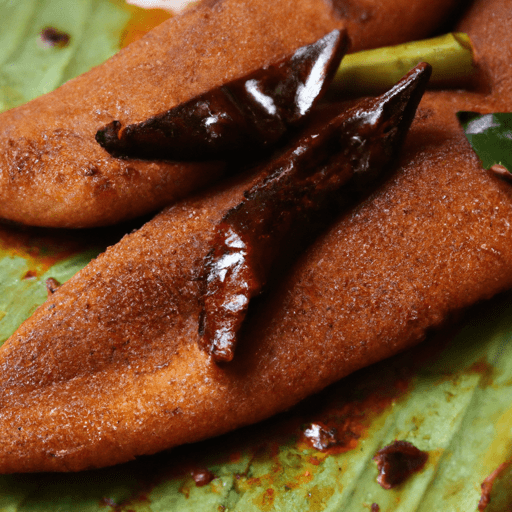Exploring the Delicious World of Bombil: The Tasty Tropical Fish
If you’re a seafood enthusiast, then you’ll undoubtedly be captivated by the enticing flavors of Bombil. This delectable tropical fish, also known as Bombay Duck, is a popular delicacy in coastal regions of India. In this blog post, we will dive deep into the culinary aspects of Bombil, exploring its taste, versatile uses in cooking, nutritional value, and some interesting facts that will surely whet your appetite.
The Taste of Bombil
Bombil is prized for its unique taste and delicate texture. When cooked, it transforms into a velvety, melt-in-your-mouth sensation that seafood lovers adore. Its flavor is subtly sweet with a hint of saltiness, making it a versatile ingredient that can be incorporated into various dishes. The flesh of Bombil has a soft, flaky consistency, perfectly complementing the rich and vibrant spices that are often paired with it in Indian cuisine.
Common Uses in Cooking
In traditional Indian cooking, Bombil finds its way into a myriad of mouthwatering dishes. One of the most popular preparations is deep-fried Bombil, where the fish is coated in a spiced batter and fried until golden and crispy. This crunchy exterior gives way to a succulent and flavorful interior, making it an irresistible treat.
Another popular method of cooking Bombil is in a curry. The fish is simmered in a fragrant tomato and onion-based sauce, infused with aromatic spices like cumin, turmeric, and chili powder. This preparation allows the fish to absorb the flavors of the spices, resulting in a curry that is rich, tangy, and immensely satisfying.
Bombil is also used in stuffing for parathas (Indian flatbread) and as a filling for savory pancakes. Its versatility makes it a fantastic addition to a wide array of recipes, making every bite a delightful experience.
Nutritional Value
Apart from being a culinary delight, Bombil also offers numerous health benefits. It is a great source of protein, essential for building and repairing tissues in our bodies. Additionally, Bombil is rich in omega-3 fatty acids, which promote heart health and contribute to overall well-being. It is also packed with vitamins and minerals, including Vitamin B12, selenium, and phosphorus, aiding in various bodily functions.
Interesting Facts about Bombil
Did you know that the name “Bombil” is derived from the Portuguese word “bombaim,” which means “Bombay”? This name was given to the fish by the Portuguese settlers who first encountered it in the coastal regions of India. Thus, the name Bombay Duck emerged and has continued to be used colloquially over the years.
Another intriguing fact about Bombil is its peculiar habit of drying when caught. Due to its high water content, fishermen used to hang the fish out to dry in a process known as “lopping.” This drying method preserved the fish, enabling it to be transported long distances without spoiling. Hence, the dried version of Bombil gained popularity as an export commodity, earning it the nickname “Bombay Duck.”
Experience the Delight of Bombil
If you’re searching for a seafood experience that combines delicate flavors, versatility, and a touch of history, look no further than Bombil. Whether deep-fried, curry-infused, or creatively incorporated into other dishes, this tropical fish promises a taste sensation that will leave you craving more. So, take a culinary adventure and savor the delectable flavors of Bombil – a true delight from the sea!
Bombil is a popular ingredient in Indian cuisine, known by various names such as Bombay duck and bummalo. Here are some interesting facts about bombil:
Origin: Bombil is native to the waters off the coast of Mumbai (formerly Bombay), India. Hence, the name “Bombay duck” is derived from this place.
Fish Classification: Despite its name, bombil is not a duck but a fish. It belongs to the family Gobiidae and the species Harpadon nehereus.
Appearance: Bombil has a thin, elongated body covered with shiny silver scales. It can reach a maximum length of about 30 centimeters.
Common Uses: In Indian cuisine, bombil is often sun-dried, salted, and used in various dishes. It is commonly used to make fried fish snacks, curries, pickles, and chutneys. The soft and flaky texture of bombil makes it popular for pan-frying or deep-frying.
Nutritional Benefits: Bombil is a nutritious fish that provides protein, omega-3 fatty acids, vitamins, and minerals. It is particularly rich in vitamin B12, selenium, and iodine. Bombil also contains calcium, iron, and phosphorus.
Unique Property: One unique aspect of bombil is its dried form. After sun-drying, bombil becomes almost transparent and acquires a papery texture. This makes it crispy when fried, adding a distinct crunch to dishes.
Historical Significance: Historically, bombil was popular among sailors and fishermen in the coastal regions of India. Due to its ability to withstand the hot climate and the lack of refrigeration, it became a reliable source of sustenance during long voyages.
Overall, bombil is a distinct ingredient in Indian cuisine, with its origin in Mumbai, versatile culinary uses, and notable nutritional benefits.




Use the share button below if you liked it.
It makes me smile, when I see it.